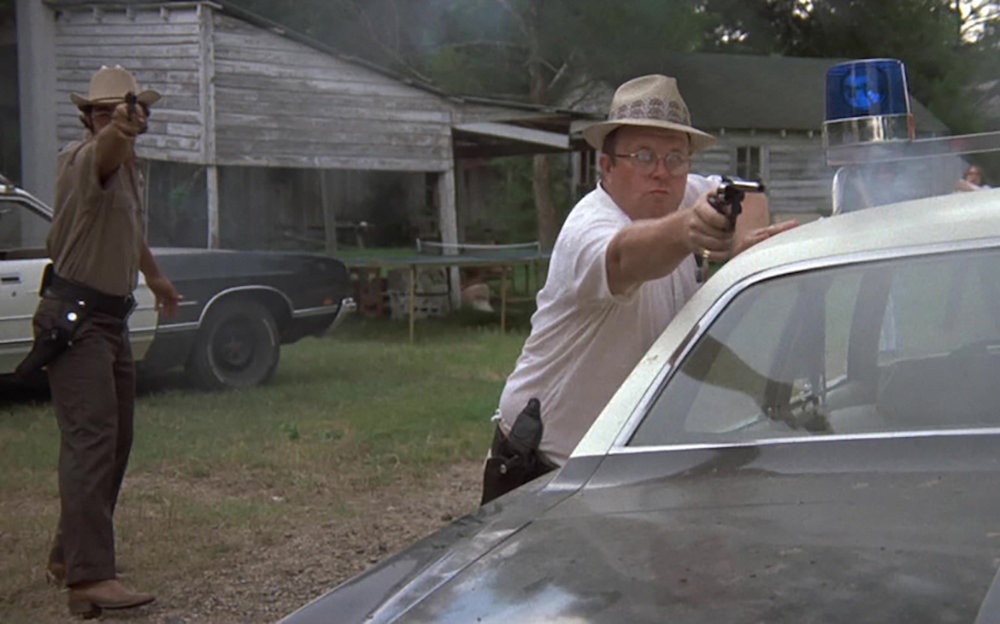On its surface, “White Lightning” (directed by Joseph Sargent and written by William W. Norton) is just an unapologetic potboiler, custom tailored for maximum enjoyment by any good ole boy redneck who plunked down a couple bills back in 1973 to see it. But on a deeper level, director Sargent crafted an atmospheric tale of obsession and corruption that echoes many of the same evils we’re dealing with today, 50 years later.
Bobby “Gator” McKlusky (played by Burt Reynolds) is serving time in an Arkansas prison for running moonshine. When Gator finds out his younger brother was murdered by corrupt sheriff J. C. Connors (Ned Beatty), he becomes obsessed with getting revenge on Connors. Knowing Connors is part of the illegal moonshine operation running in a nearby county, Gator agrees to work undercover for the Treasury Department to get an early release from prison and nail Connors for his crimes. But Gator wants to kill Connors and has to play both sides, the moonshiners and the Treasury Department, in order to take out Connors permanently.
Before Reynolds Became an Icon
“White Lightning” is one of the last films Reynolds did before becoming the iconic superstar with the trademark mustache and high pitched manic laugh and swagger (parodied hilariously many times by Norm Macdonald). Here, Burt’s more like Lewis Medlock, the character he played in “Deliverance,” rugged, morally gray, and all business
Most of the film shows Gator working and living with fellow moonshiner Roy Boone (Bo Hopkins) and Roy’s spacey girlfriend Lou (Jennifer Billingsley) as he tries to get within reach of Sheriff Connors. The film ratchets up the anxiety in places as Gator gets closer to being outed as an undercover agent, which in the Arkansas backwoods means an instant death sentence. The Treasury Department agents, who in Reynold’s later films would probably be portrayed at a “The Three Stooges” level of goofiness, here are more subtly hopeless and unaware of their surroundings, threatening to expose Gator with their incompetence.

Also creating a claustrophobic tension in the film is the cinematography, making every scene feel hot and hazy. Everyone in the film is either perspiring, sweating, or drenched in sweat. You can almost feel the suffocating heat and mosquitoes coming off the screen.
Hot, Hazy Obsession
Ned Beatty’s J. C. Connors is the perfect foil for Gator. He’s as sleazy as it gets, pudgy, impassive, and ruthless. In one scene, when an elderly man refuses to give him information he needs, he casually grabs the man’s hand, puts it in the hinge of a door and presses all his weight on the door, crushing the man’s fingers until he gives up the information. Afterward, the man writhing in pain, Connors wipes his brow and tosses a, “You need to get that looked at, boy” as he lumbers away. Connors is the type of Southern-fried sheriff who uses his power to strong-arm the populace into giving him money, while simultaneously complaining about how communism and hippies are destroying America.
I enjoyed “White Lightning;” but my one complaint is that the film doesn’t go far enough. What could have been an ultra-violent grindhouse film drenched in backwater atmosphere instead comes off more like an edgier version of a “The Dukes of Hazzard” episode. Still, watching Gator McKlusky’s obsessive quest is a great ride.
“White Lightning” is available to rent or buy on streaming.